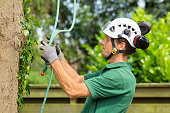There are many benefits of performing a tree hazard assessment. Trees pose a lot of risk in some cases. This is often the case when they are weak and infirm. Weak and infirm trees are vulnerable and can easily fall down. They can easily fall over and cause damage. A tree hazard assessment consists of several steps. It is often the job of a government agency or a similar body to perform a tree hazard assessment. Areas with a lot of trees have regular tree hazard assessments carried out. They are often carried out on a monthly or annual basis. The exact extent of tree hazard assessments depends on the risk of the trees falling down.
Calculating the risk:
The potential damage caused by a tree falling down can be very high. This is one of the main reasons for performing a tree hazard assessment. Performing a tree hazard assessment takes very little time. The resulting benefits are long lasting. A tree hazard assessment measures the risk that a certain tree might fall. It is often carried out by an arborist from Sydney. An arborist studies trees as a professional. An arborist has the knowledge and tools required to determine the risks posed by a falling tree. An arborist takes several factors into account and measures the likelihood of a tree falling down. Only then can a thorough and complete tree hazard assessment be performed. People other than an arborist might complete a tree hazard assessment. This is often the case where a qualified arborist is not available for performing the tests.
The weight of the tree must be considered as a part of a tree hazard assessment. Large trees have a potential for causing more harm than small ones do. This is because large trees weigh a lot more than smaller ones. A large tree can weigh several thousand kilograms. Some of the largest trees on earth weigh as much as three to four thousand kilograms. A tree as big as that rarely falls, though. However, performing a full fledged tree hazard assessment is still necessary as it might help to prevent a serious accident.
Suggesting measures for prevention:
A tree hazard assessment also suggests measures to avoid the risks posed by trees. At the least, a tree hazard assessment suggests different ways of reducing the risks posed by trees falling down. The main purpose of performing a tree hazard assessment is to find ways to reduce the risks posed by falling trees. A falling tree can be very dangerous. The measures suggested to prevent trees from falling are usually described in a lot of detail. They lay out the responsibility of each party in ensuring that a certain tree does not fall down.
